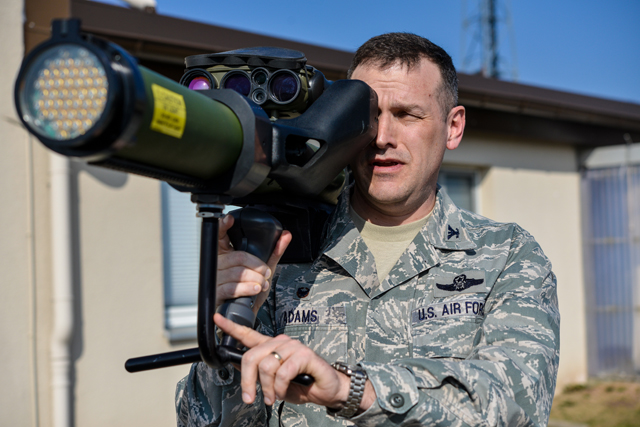
The Polygone Electronic Warfare Range extended their capabilities with the opening of the Polygone Control Center on March 18 in Bann, Germany.
With the PCC, Polygone operators talk to aircraft through a simulator which allows them to send virtual threats to test pilots on their reactions during enemy engagements. The control center offers a consolidated operating system that allows all exercise players to interact on one screen.
The Polygone range also offers a worldwide deployable mobile alternative where operators can travel to the exercise location with a control center vehicle, the Multinational Aviation Live Virtual Constructive Training System, and simulate attacks.
According to Maj. Ariane Greenman, director of operations at the Polygone Warrior Preparation Center Detachment 3, the PCC is a vital component to air power across the European theater because it keeps NATO allies combat ready.
“The PCC allows us to simulate attacking (an enemy) more realistically and to fight the threats they (use),” Greenman said. “It prepares pilots for (emergencies) and gives them the chance to get real-time feedback on their threat reactions and whether or not they would have survived the engagement.”
Because PCC operators are capable of communication with pilots during flight, the training offers a chance to get immediate and thorough feedback, as opposed to the old training system which only notified them of passing or failing.
Immediate feedback is not the only new convenience that Polygone offers.
The MALTS control center dramatically reduces the cost of threat survivability training by delivering the range to the customer rather than requiring them to come here, said Master Sgt. John Zelinski, PEWR Detachment 3 superintendent.
“Mobilizing a squadron of jets can be enormously expensive,” Zelinski said. “It entails the movement of hundreds of support personnel and equipment. The MALTS alleviates a huge portion of that cost. With budget constraints surrounding the Department of Defense at the moment, this is an essential step in the right direction.”
Prior to the PCC, Polygone range had remained stagnant for approximately 25 years. Before this development, NATO aircrews moved entire squadrons halfway around the world, at an enormous expense, to access modern electronic warfare threat training.
After receiving $16.7 million, Polygone built upon existing technologies from other electronic ranges, and now presents a state-of-the-art training range only 20 kilometers from Ramstein.
The PCC offers opportunities to train with virtual missiles and a chance for pilots to train on the radar systems from live threats. The PEWR uses Roland surface-to-air missile systems to lock into an aircraft’s radar and teach pilots how to divert similar connections.
German army Capt. Stefan Nilles-Valerius, PEWR threat system officer in charge, explained how the use of these missiles offers a unique capability in how it prepares pilots in avoiding radar detection by enemy threats.
“(The use of Rolands) brings live training capability with highly experienced operators who have been doing this for (many years),” Nilles-Valerius said. “Some of them were trained in the East German air force and army. This gives us the most realistic situation to train the pilots.”
After 33 months of preparation, Polygone now offers a modernized and real-time electronic warfare training system to NATO aircrews.







